#cryptobranchidae
Text

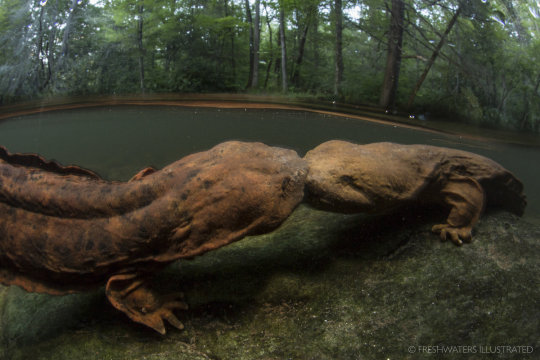
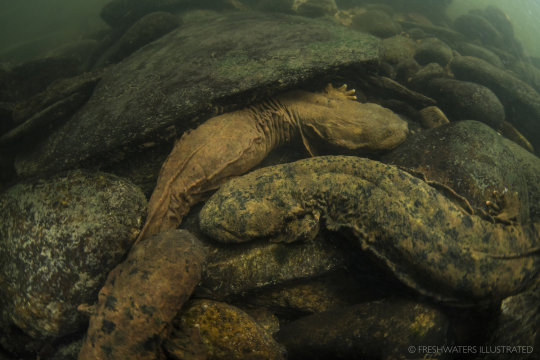

Hellbenders (Cryptobranchus alleganiensis), family Cryptobranchidae, eastern United States
The smallest of the "Giant Salamanders" in the family Cryptobranchidae, this aquatic salamander is nonetheless quite large, growing to a length of up to 29 inches.
While only considered "Vulnerable" nationally, this species is considered endangered in some states.
photographs by David Herasimtschuk
#giant salamander#cryptobranchus#cryptobranchidae#salamander#amphibian#herpetology#animals#nature#north america
3K notes
·
View notes
Text
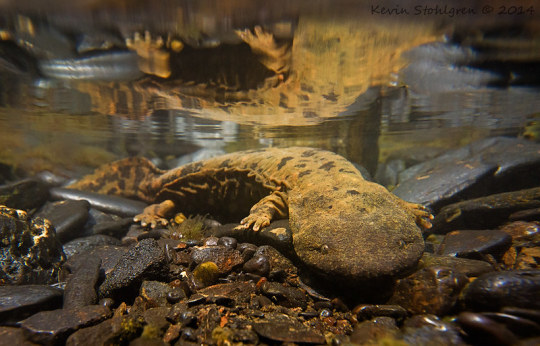
An Eastern hellbender (Cryptobranchus a. alleganiensis) also known as the snot otter, devil-dog, lasagna lizard, grampus, mud devil, or Allegheny alligator, in Tennessee, USA
by Kevin Stohlgren
#hellbender#giant salamanders#salamanders#amphibians#cryptobranchus alleganiensis#cryptobranchus#cryptobranchidae#urodela#amphibia#chordata#wildlife: tennessee#wildlife: usa#wildlife: north america
1K notes
·
View notes
Photo



A Big Round of Applause for the Chinese Giant Salamander
The Chinese giant salamander (Andrias davidianus) is one of the largest amphibians in the world, second only to the South China giant salamander (Andrias sligoi) which was only recently distinguished as a separate species. This species typically weights 25–30 kg (55–66 lb) and is 1.15 m (3.8 ft) in length, although It can reach up to 50 kg (110 lb) and 1.8 m (5.9 ft). Its anatomy is well-suited to its aquatic lifestyle; the broad, flat body allows it to creep along riverbeds, and its wide mouth allows it to gulp down any prey it might come accross. Their eyesight is very poor and as a result the eyes themselves are small. A. davidianus‘s skin is typically dark to blend in with its surrounding, and the excess wrinkles provide more surface area through which it can absorb oxygen from the water.
As their name suggests, the Chinese giant salamander is found only in China; specifically fragmented areas from Qinghai to Jiangsu and south to Sichuan, Guangxi and Guangdong. This species is entirely aquatic, and thus is most often found in the basins of the Yangtze, Yellow and Pearl Rivers. A. davidianus lives in caves or freshwater crevices, although they are also seen along lakes or open rocky riverbeds.
Part of the reason this species is so large is because they grow throughout their entire lives. Chinese giant salamanders start out as eggs, which are hatched in groups of 400-500 laid in slow-moving underwater cavities. The eggs are quite large, at a maximum size of 14–16 mm (0.55–0.62 in) after they’re laid and habe absorbed water. They take 50-60 days to hatch, and larvae emerge already resembling their parents, albeit with external gills, and are already 3 cm (1.2 in) long. The young are independent, although they typically stay in the stream they were hatched in until they’re fully grown. The gills are lost at 3 years old, although sexual maturity isn’t reached until 5 to 6 years and a length of 40–50 cm (16–20 in).
Mating occurs between mating occurs between July and September, when the water temperature reaches 20 °C (68 °F). During this time, males push sand and gravel out of their dens to clean them-- a process that can take up to a week-- and ‘shower’ regularly by moving under fast-moving currents. Females are attracted to clean dens, and once she chooses a mate the pair engage in a number of courtship behaviors including knocking bellies, leaning side-to-side, and cohabitating. After the female lays her eggs, she leaves and the male guards the eggs until they hatch. Individuals as old as 60 have been recorded in the wild, although few individuals survive past the larval stage.
Chinese giant salamanders have few predators as adults. The most common are otters, red foxes, weasels and hog badgers, although juveniles can also fall prey to large fish or even adult salamanders. To deter predators, A. davidianus secretes a white acidic, sticky substance from its skin. For the most part this species is the apex predator of its ecosystem, and feeds on insects, smaller amphibians, crustaceans, fish, and the Chinese water shrew (Chimarrogale styani). Individuals detect their prey by a combination of detecting chemicals in the water and a series of nodes along the sides of their bodies that sense vibration. When prey is located, the salamander creates a vaccum with their mouths, sucking in water and their meal.
Conservation status: The Chinese giant salamander is considered Critically Endangered by the IUCN. Primary threats include habitat loss, disease, and over-harvesting for meat. National and international conservation programs and zoos are working to raise awareness, conserve habitat, and raise captive-bred salamanders for re-release in the wild.
Extra fun picture for Chinese New Year:
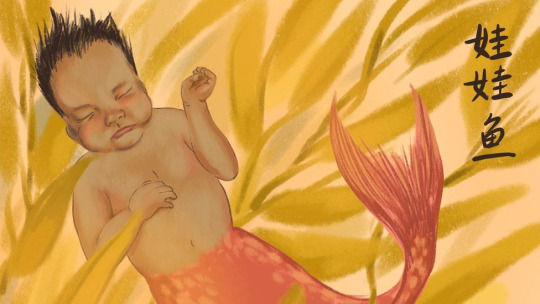
This picture is from a series of paintings by artist Frankie Huang, who depicts a number of Chinese words literally. In this piece, the Chinese giant salamander is shown as the literal translation of its name in China: Wawayu, or ‘Baby fish’. This name comes from the salamanders’ distinct vocalizations, which can often sound like crying babies.
Photos
Theodore Papenfuss
Egon Heiss
Ben Tapley
Frankie Huang (Instagram)
#chinese giant salamander#Urodela#Cryptobranchidae#giant salamanders#salamanders#amphibians#mountains#caves#rivers#freshwater fauna#subterranean fauna#asia#east asia#animal facts#biology#zoology#happy Chinese New Year!#(ik im two days late but i was moving out of my apartment)#(again)
207 notes
·
View notes
Text



Bitcoin is like anything else: it's worth what people are willing to pay for it. Bitcoin never sleeps. We need to move quickly and grow quickly and do everything sooner rather than later. If you like gold, there are many reasons you should like Bitcoin.
#crypto currency#bitcoin#investors#crypto banking#cryptobusiness#cryptobot#crypto#cryptobranchidae#crypto bros#cryptoboom#investments#investment#poverty#blog#bd/sm blog#blogi motylkowe#18+ blog#blockchain#ask blog#pink blog#alena blohm#blogger#coinbase#coin#coining post#xeno coining
9 notes
·
View notes
Text



giant salamanders are some of my favorite herps
#i drew these on the back of a peer review for communications lmfao#.png#japanese giant salamander#chinese giant salamander#cryptobranchidae#herpetology
78 notes
·
View notes
Text
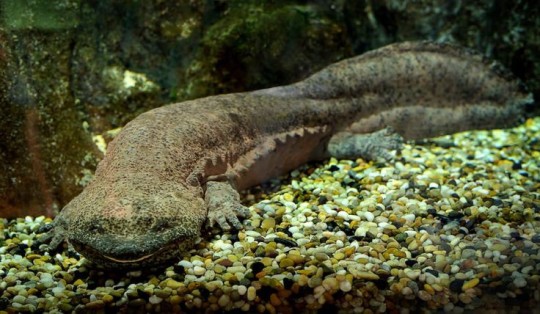
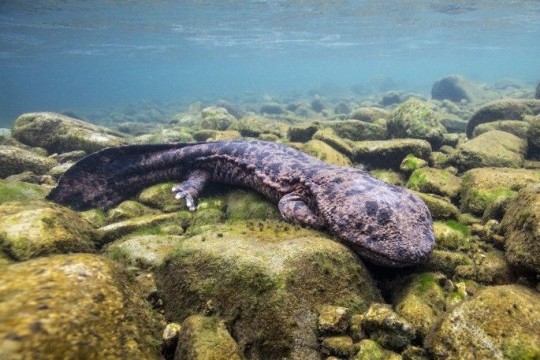
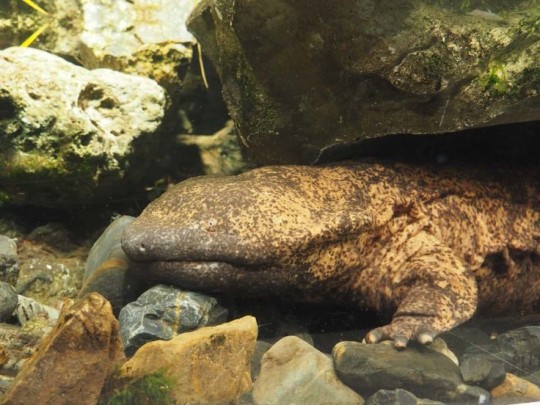
Chinese giant salamander - critically endangered
📍China
0 notes
Text
I love being chaotically interested in and into stuff. Like right now it’s almost 1am and while I’m AFKing in minecraft at my farms I’m learning about salamander reproduction. What did I do before this? I made a little birthday photoshoot set for my snakes who turn 1 on Saturday.
I feel like nowadays people are obsessed with the idea that everything you do needs to have a specific purpose, it needs to be useful or better you, it’s why so many people from older generations treat things like video games as a complete waste of time. Like yes please try to get done what you need to get done but something making you smile is enough a reason to do it. If it’s not hurting anyone or anything and it makes you laugh or smile do it! Do stuff just because! Do stuff just because no one can stop you.
Life feels 1000x less dull and more enjoyable when you do stuff just because.
Why am I looking at the bugs under rocks? Because I’m curious what’s there. Why am I playing this video game? Because it’s fun! Why am I learning about salamander reproduction at 1am? because I enjoy it. (as in I enjoy learning about animals don’t take this out of context)
So anyways did you know that salamanders don’t copulate? Most species the male after courting a female will drop a spermatophore and if receptive the female will pick it up with her cloaca. Hynobiidae and Cryptobranchidae are exceptions to this utilizing external fertilization like frogs.
5 notes
·
View notes
Photo

Japanese Giant Salamander (Andrias japonicus)
Family: Cryptobranchidae (Giant Salamander Family)
IUCN Conservation Status: Near Threatened
------------------------------------------------------------------------------
Native to northern Kyushu and western Honshu in the Japanese archipelago, the Japanese Giant Salamander is one of the largest amphibians on earth - it grows to be over 1.5 meters (5 feet) long, and can weigh up to 25kg (55.12lbs.) It lives on the bottom of cold, fast-flowing mountain streams where it relies on camouflage to take its prey (primarily insects, worms, crustaceans and small fish), by surprise, using its wide mouth to suck prey towards it before swallowing them whole. Primarily nocturnal, it spends the day sleeping under rocks and emerges at night, slowly crawling along the streambed in search of food (although due to their extremely slow metabolism, adults of this species can go for weeks without eating.) Japanese Giant Salamanders breed in the early Autumn/Fall, with males seeking out abandoned burrows, small caverns or grooves in the streambed to use as nests and fiercely defending them from rival males - it has even been reported that larger males may swallow smaller rivals to gain access to a potential nest. Once a female finds a male with a suitable nest nest she will approach him and lay a clutch of 400-600 eggs, which he will fertilize externally and then guard until they hatch 12-15 weeks later. Although they lack gills, Japanese Giant Salamanders are capable of breathing underwater by carrying out respiration through their thin, wrinkly skin - they also have lungs, but it seems that these are non-functional, vestigial organs that can no longer carry out gas exchange.
Extra Fun Fact: The character of King Andrias, a giant newt from the Disney show Amphibia, is named after the genus Andrias, which (in addition to the Japanese Giant Salamander), contains the Chinese Giant Salamander (Andrias davidianus), which can grow to be up to 1.8 meters (5.9ft) long, and the extremely rare and possible extinct South China Giant Salamander (Andrias sligoi), which may exceed 1.83 meters (6ft) in length. Fittingly, King Andrias is shown to be much larger than any other newt in the show.
------------------------------------------------------------------------------
Image Source: https://www.inaturalist.org/taxa/26811-Andrias-japonicus
#japanese giant salamander#salamander#giant salamander#salamanders#amphibians#amphibia#herpetofauna#Herpetology#zoology#biology#animal#animals#wildlife
49 notes
·
View notes
Text
[i have officially reached 40 followers on this blog. thank you!! if you enjoy my “facts” about clodsire/quagsire, i recommend looking into the family cryptobranchidae. the giant salamanders are what clodsire and quagsire are based on, so while i sometimes take creative liberties with science, most of my facts about them are based on real information about the giant salamanders. they’re really fascinating!]
2 notes
·
View notes
Text

Eastern Hellbender (Cryptobranchus alleganiensis), ALBINO, family Cryptobranchidae, western NC, USA
The largest salamander in the Americas, it gorws to a total maximum length of up to 40 cm (15.7 in).
photograph by Wayne VanDevender
#hellbender#cryptobranchus#cryptobranchidae#salamander#amphibian#herpetology#animals#nature#north america
551 notes
·
View notes
Text

A hellbender (Cryptobranchus alleganiensis) also known as the snot otter, devil-dog, lasagna lizard, grampus, mud devil, or Allegheny alligator, in Tennessee, USA
by Alan Cressler
#hellbender#giant salamander#salamanders#amphibians#cryptobranchus alleganiensis#cryptobranchus#cryptobranchidae#urodela#amphibia#chordata#wildlife: tennessee#wildlife: usa#wildlife: north america
164 notes
·
View notes
Note
SORRY got distracted because I am LEARNING hohohohohoho leaving me with Wikipedia pages about salamanders is so dangerous I can and will go down a three hour long rabbit hole. SO let me tell you about GIANT salamanders now ^_^ there are five species of giant salamander, which make up the family Cryptobranchidae (which is a kick ass name). Three of those are from China, one is from Japan, and one is from the US. The ones from China and Japan fall into the genus Andrias, while the hellbender (from the eastern United States, which also has just the single most kick ass name I’ve ever heard) is the only member of the genus Cryptobranchus.
Now, the vast VAST majority of salamanders are relatively small, some being just as big as your finger or the palm of your hand probably. This is especially true since most larger species have long since gone extinct from climate change, predation, erosion/contamination of habitats, etc. However, the five giant salamanders can get HUGE. Some of them, like the hellbender, are large for a salamander but they don’t really scream GIANT you know? BUT. But. There’s these two, Andrias davidianus and Andrias sligoi, that get fucking ENORMOUS. Like I’m talking hold ‘em with two arms big.
The Andrias sligoi, otherwise known as the South China giant salamander, is quite possibly the single largest salamander species, and amphibian species, for that matter, still around today (although it is critically endangered and may possibly be extinct). The largest known Andrias specimen was 1.8 meters long! While it had originally been attributed as an Andrias davidianus specimen, more recent samplings of Andrias sligoi suggest it is very likely to have belonged to that species instead. Speaking of the former species, which is just known as the Chinese giant salamander, the average adult specimen weighs 25-30 kg and is around 1.5 km in length. That’s fucking HUGE for a salamander. It can even reach up to 50 kg in weight and 1.8 m in length and yet it’s still the second largest species after the South China giant salamander!! That’s mental! Here’s some pics:


These guys are absolute chonkers. Humongous boys of the gargantuan variety. I want to hug one even though they are just so slimy. This concludes my educational seminar on giant salamanders, I hope you’ve enjoyed :D
OH very interesting!!! looking at these made me think “flat fuck friday” bc I’m sure I’ve seen a post like that with a picture of a giant salamander. anyway I don’t have much to add to this bc I know nothing about salamanders or most animals in general but it was a very interesting read ty ty ^_^
4 notes
·
View notes
Text
A new species of giant salamander has been discovered in the remote forests of southern China.
Scientists have named the new species of giant salamander the “mammoth newt” due to its large size and unique features. The new species is the largest amphibian in the world, measuring up to 1.8 meters in length and weighing up to 65 kilograms.
The mammoth newt is a member of the Cryptobranchidae family, which includes the endangered Chinese giant salamander and the Japanese giant salamander. It is believed that the mammoth newt is closely related to the Chinese giant salamander, although it is much larger.
The discovery of the mammoth newt is an exciting development for conservation efforts. It is believed that the new species could help protect the Chinese giant salamander, which is critically endangered due to habitat loss, pollution, and over-harvesting.
The researchers who discovered the mammoth newt say that further research is needed to better understand the species and how it can be protected. They hope that the new species can help inform conservation efforts, and that it can be used to help protect other endangered species in the region.
0 notes
Photo


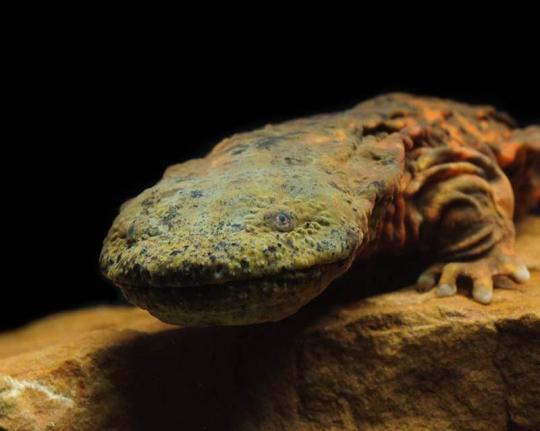
The Heavenly Hellbender Salamander
Also known as mud-devils or Allegheny alligators, the Hellbender Salamander (Cryptobranchus alleganiensis) is the largest salamander in North and South America. They can grow up to two feet in length and weigh between 3-5 lbs, making them easily distinguishable from other salamanders. They’re only found in fast-moving rivers and streams in the Appalachian mountains, with large, intermittent rocks that they can nest under. The hellbenders are also unique in that they have vestigial gills and lungs- as adults, they can absorb oxygen using several loose flaps of thick wrinkled skin running along their sides. The lungs are used instead for bouncy, and only rarely to breathe. In addition to breathing, their skin secretes a toxin that, although not fatal, is highly unpleasant to predators and curious humans.
Due to their size, hellbender salamanders feed primarily on crayfish, but they are also known to eat other invertebrates, small fish and even juvenile hellbenders and eggs. They are ambush predators, hiding under rocks and allowing their heads to blend in with the surrounding riverbed. As a result of their diet, they tend to be more active in the summer, when warm weather brings out crayfish, and at night when ambushing is easier.
Outside of their breeding season these massive amphibians are solitary. When they do mate, they do so externally: males exavate a nest beneath a rock and either attract or coral pregnant females inside, where she lays her eggs and he fertilizes them. The females can lay between 200 and 400 eggs, although males have been known to lure more than one female into their nests, and clutches of almost 2,000 eggs have been found. After mating, the female is driven out and the male incubates the eggs under his skin folds for just over two months. When they hatch, juveniles lack limbs and rely on their gills to breathe for two years, until the external gills are shed. They mature sexually at 5-6 years, and can live for up to 25 years.
Conservation status: The hellbender’s range has declined dramatically in recent decades, driven primarily by habitat destruction, pollution and overfishing of them and their prey. Classified as Near Threatened, they are listed as protected in several states in and around Appalachia. There are also several conservation programs in place to preserve the species.
#hellbender salamander#Urodela#Cryptobranchidae#salamanders#giant salamanders#amphibians#frewshwater amphibians#north america
216 notes
·
View notes
Text
The Creature Awaits #102:
Each week I plan to feature an amazing creature, admiring God's fantastic artistry. Hopefully it’ll brighten someone’s day to see something new and interesting if they haven’t seen it before. : )

(Beautiful photograph courtesy of the Smithsonian's National Zoo (CC BY-NC-ND 2.0))
The Japanese Giant Salamander
Scientific Name: Andrias japonicus
Region: Scattered riverbeds throughout southwestern Japan
Size: Up to about 5' (~1.5m) long!
Interesting Note: One of the world's largest salamanders, and one of only five known species in the Giant Salamander family, Cryptobranchidae, when full-grown, these gentle giants weigh roughly 50-55lbs (~23-25kg)! Their original name in Japanese, Ōsanshōuo, literally translates to "giant pepper fish" - Cute! : )
#creatureawaits#Japanese Giant Salamander#giant salamander#Andrias japonicus#Cryptobranchidae#giant pepper fish#cute amphibians#giant amphibians#hide
9 notes
·
View notes
Photo
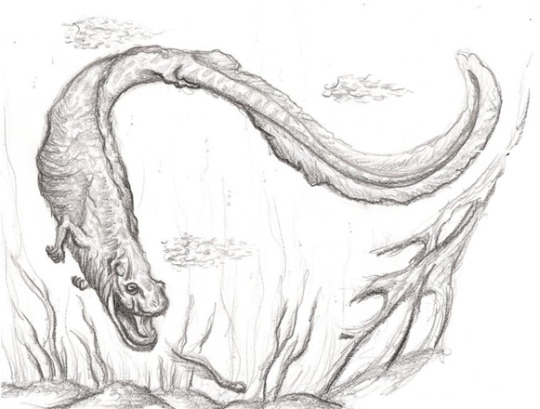
The Trinity Alps Giant Salamander is an alleged giant salamander found in the Trinity Alps in California. The Trinity Alps Salamander is described as a brown colored salamander that is as big or even bigger than a Hellbender and some have been reported to be as big as alligators. Giant salamanders do exist however there have been no confirmed cases of giant salamanders in the Trinity Alps region so a man named Tom Slick set out on an expedition to prove their existence however he was unsuccessful. Experts believe that the Trinity Alps Giant Salamander could be a part of the Cryptobranchidae genus of salamanders which includes the Hellbender and the Japanese Giant Salamander.
#Trinity Alps Giant Salamander#Trinity Alps Giant Salamanders#Trinity alps#California#us#usa#north america#salamander#salamanders#Hellbender#Hellbenders#Japanese Giant Salamander#Japanese Giant Salamnders#Cryptobranchidae#Cryptobranchidaes#amphibian#amphibans#cryptid#cryptids#unknown#paranormal
157 notes
·
View notes